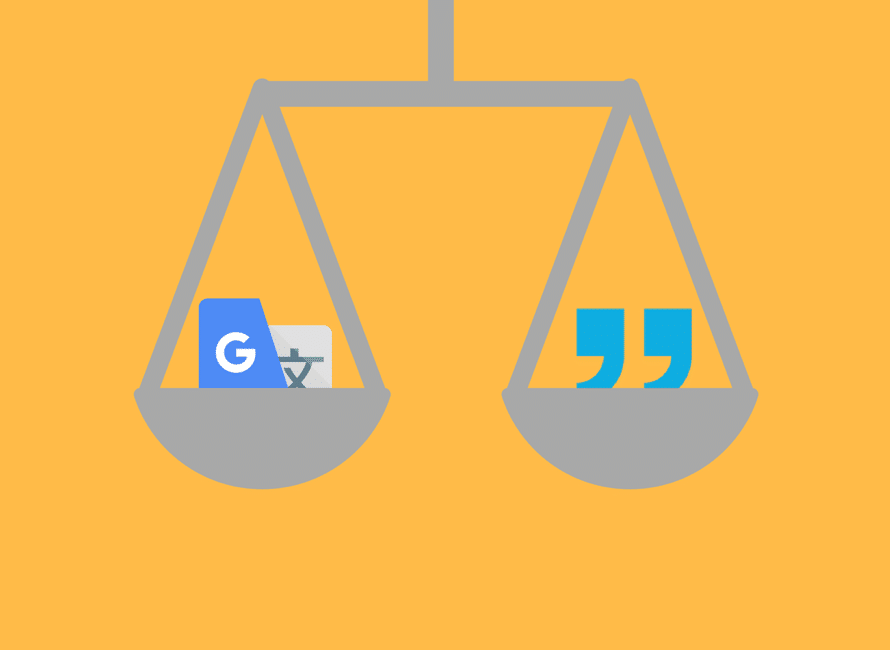How’s your content strategy, digital marketing, and social media support playing out these days? Having a content marketing plan is one of the best ways for businesses to improve branding and acquire quality organic traffic. Newly launched businesses often have a limited budget, perhaps only showing up as a single blog post every now and then. However, the good news is that content marketing offers a low-cost yet effective strategy to boost ROI without necessarily hiring an entire content team or social media specialist.
Consequently, 70% of businesses are already investing heavily in content marketing and enhanced social media support. If you’ve already launched your startup, then you probably shouldn’t lag on your own content marketing strategy. Before you start, you need a robust content marketing plan to ensure you are heading in the right direction and not wasting your budget.
In other words, developing effective content is only part of the process. You might also want to conduct a content audit, tweak existing content, create buyer personas, optimize your efforts for search engine impact, or perhaps drop back for a bit and analyze your preconceptions as to what constitutes the typical customer journey. In short, creating content that succeeds flows naturally from doing some digital marketing research.
Relax, though! A content plan need not be too complicated. Successful inbound marketing consists largely of connecting a potential customer with valuable content. Assuming you can create great content, the job of a content marketer becomes decidedly simpler. Here is the six-step content marketing strategy that businesses can use to reach their target audience and increase conversions. Use these to build your own custom ultimate guide tailored to your specific niche.
1. Specify Your Target Audience and Content Marketing Goals
The first step to creating a successful content marketing strategy is to define your target audience. As you conduct your website content audit and perform at least some keyword research, ask yourself these four questions:
- Who is my ideal customer?
- What are their pain points?
- Where do they look for solutions to their problems – Google, Bing, Facebook, Instagram, or any other channel?
- What type of content do they prefer – reading a blog post, infographics, videos, influencer marketing, or something else?
These questions help create content that addresses your audience’s issues. Likewise, it will also enable you to distribute the content in your customer’s preferred format and channel. At the same time, you should also set content marketing goals. What is that you want to achieve from your content marketing efforts? Check out Adobe Spark’s free marketing templates for one that aligns with your goals. Some of the most common goals of content marketing for startups are:
- increase organic traffic;
- boost brand awareness;
- increase social media engagement and get more followers;
- improve the website’s position in search engines; and
- attract new email subscribers.
Additionally, set a deadline by when you want to achieve each of the marketing goals.
2. Decide on Content Types for Each Stage of the Sales Funnel
In the previous step, you determined what format of content your target audience prefers. Now, dig a little deeper to decide what types of content you should be creating for each stage of the sales funnel.
Blogging is the most common type of content marketing strategy that every business does. However, to get the most out of content marketing, you need to create different content for each stage of the funnel.
Here are the three stages of the sales funnel and the best content types for each of them.
Awareness
In this stage, prospects are looking for solutions to their problems. This is when they become aware of your brand. As a result, the best type of content for this stage includes:
- How-To Guides: This article from Moz about “improving domain authority” is a good example of a how-to guide. It provides steps by step instructions to increase your website’s domain authority, a critical metric for any content plan.
- Informational Content: This article on “birthday gifts” from MyUKMailBox is a great example of informational content. As a result, anyone looking for ideas to give something to their loved ones might land on this page.
- Infographics: For example, Oberlo publishes infographics regularly to increase shareability and drive more traffic to its website.
Consideration
In this stage, prospects have identified a few solutions to their problems. They want to ensure whether you are the right choice for them. The best type of content plan for this stage might include:
- Case Studies: This case study by Hootsuite is an excellent example of the consideration stage’s content. The post highlights how Amway used Hootsuite to harness the power of social media to generate sales. It also includes the numbers to entice prospects into considering their platform for social media marketing.
- Webinars: For example, Slack conducts webinars that talk about their product and how to make the most out of it. This way, Slack is able to demonstrate what customers can get from their product to entice them to convert.
Purchase
The customer has decided to purchase from you and needs a last piece of information before converting. The best type of content for this stage includes:
- Competitive Comparisons: This comparison article by Hubspot is a great example of the content for the last stage of the sales funnel. The post shows the top CRM tools for businesses while keeping Hubspot in the best light possible.
- Detailed Specifications: For example, Mailchimp has a separate landing page highlighting each feature of the product and why you should be using it. Additionally, the specifications are divided into different industries and businesses. This increases the chances of conversions as the specs are explicitly catered to each industry.
3. Determine Your Content Creation Process
The next step is to define how your brand will create content. This would be something that all your content creators need to follow every time they are writing for your company. The content production phase will proceed far more smoothly when it’s clear what’s expected of those actually creating content!
Your people will also benefit enormously from an editorial calendar (see below). An effective editorial calendar can serve creative types well as they see the bigger picture of the current content marketing campaign as well as the track record of previous efforts. Your editorial calendar should give everyone a birds-eye view of content ideas and content promotion tactics across time.
Every step in your content creation process should be in sequential order. For example:
- Decide on the content type – blog, infographic, video content, etc. – and your content creator.
- Choose a topic appropriate to the content format and decide on the desired length.
- Research keywords to help guide the creation of effective content.
- Prepare an outline that includes an intro and all the subheadings.
- Get the outline approved.
- Write/produce the content.
- Forward the content asset to the editor.
- Edit the content as per suggestions from the editor.
- Forward the final content to the marketer.
Designing a content creation process ensures everyone in your organization stays on the same page.
4. Create a Content Calendar
It is essential to publish content regularly to get the best possible results. If you don’t have a dedicated team of content creators, it is easy to go inconsistent.
Therefore, make sure to create a calendar that includes what type of content you will be publishing and when. (This is where your content audit comes in handy.) Be sure to include a reminder of the big-picture content marketing goal to every deadline.
For example, you can create a Google Calendar and add due dates for each piece of content.
If you want advanced tools to create a content calendar, you can try CoSchedule or Trello. I use Trello for content management. It allows adding team members who should be creating content, writing detailed descriptions about the topic, and tagging the due date. In my experience, successful content marketing plans don’t happen without a content calendar everyone can access.
5. Identify the Best Promotion Channels
You are producing amazing content, but it won’t be of any worth if you don’t promote it effectively. When building any content marketing strategy, it is crucial to identify where most of your target audience is spending time online. Depending on the size of your company, this is where your marketing funnel might benefit by crossing paths with your public relations people.
For example, if you sell women’s accessories, Instagram might be the best channel for you as it has 43%, female users. But, if you aim to advertise to the older generation, YouTube might be a good choice as 70% of 50-64-year-olds use the platform.
Some of the best ways to promote your content include:
- Use email marketing to distribute effective content to your subscribers.
- If you mention any influencers in your content, notify them about it to spread the word about your brand.
- Repurpose your blog to multiple small contents and promote it on social media. For example, Social Bakers, an AI-powered social media marketing tool, uses Instagram to advertise its content and drive traffic to its website.
- Leverage Q&A sites like Quora to share your content to the audience that is interested in your industry.
- Promote your content to different groups on social media. For instance, make it part of your content marketing strategy to join industry-specific groups on Facebook and LinkedIn to widen your reach.
6. Measure and Optimize
It is essential to measure the results of your content marketing strategy. You will need to go back to the goals you specified in the first step.
Check whether you have achieved those goals or are at least near to accomplishing them. If not, it’s time to revisit your content marketing plan and determine where you are going wrong. Are you producing quality content? Was your content marketing effort high quality but targeted to the wrong audience? Did your content marketing plan miss an important step somewhere along the way? Did you optimize all of your channels for search engine optimization?
Apart from your goals, focus on these metrics to determine the success of your content marketing plan success:
- organic traffic;
- website ranking on search engines;
- lead quality;
- social media engagement;
- conversion rate; and
- quality and quantity of backlinks.
Compare these metrics to the previous period – before you started content marketing – and see if there’s an increase in them. If yes, you are going in the right direction. If not, optimize your content marketing strategy. For example, go back to your content audit and look for previously missed insights. Additionally, scan user-generated comments on every blog post.
Final Thoughts
Developing a content marketing strategy is a constant process that every business must invest in to gain a competitive edge as they seek potential customers. For startups, employing the best content marketing strategy is key to increasing sales and establishing an excellent online reputation.
Follow the six steps mentioned above to create a robust content marketing plan to take your startup to the next level. Maybe set aside some downtime to peruse a few Content Marketing Institute articles relevant to your business. Last but not least, follow the best practices of content marketing to get the most of your content marketing strategy.






